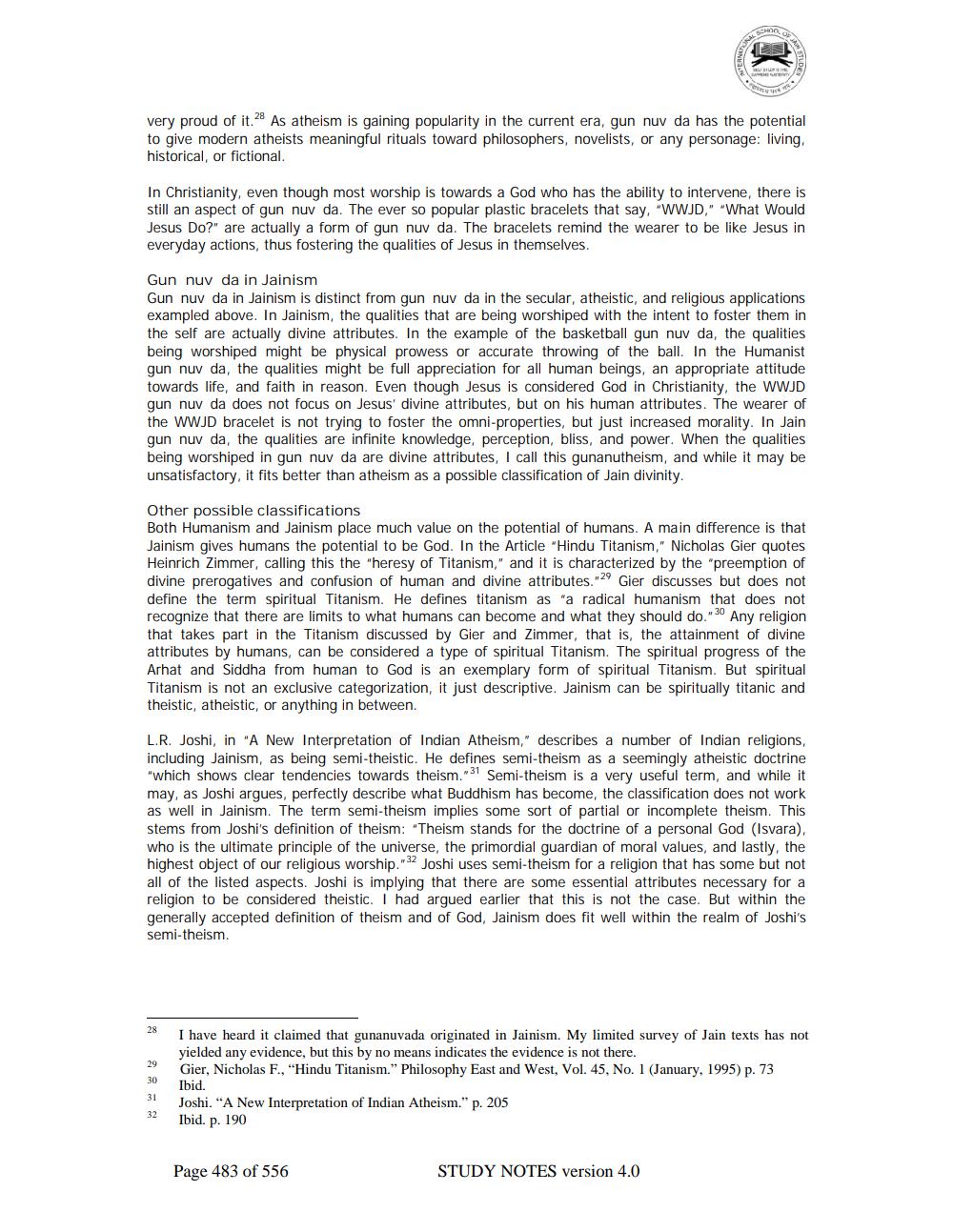________________
very proud of it.28 As atheism is gaining popularity in the current era, gun nuv da has the potential to give modern atheists meaningful rituals toward philosophers, novelists, or any personage: living, historical, or fictional.
In Christianity, even though most worship is towards a God who has the ability to intervene, there is still an aspect of gun nuv da. The ever so popular plastic bracelets that say, "WWJD," "What Would Jesus Do?" are actually a form of gun nuv da. The bracelets remind the wearer to be like Jesus in everyday actions, thus fostering the qualities of Jesus in themselves.
ences
Gun nuv da in Jainism
Gun nuv da in Jainism is distinct from gun nuv da in the secular, atheistic, and religious applications exampled above. In Jainism, the qualities that are being worshiped with the intent to foster them in the self are actually divine attributes. In the example of the basketball gun nuv da, the qualities being worshiped might be physical prowess or accurate throwing of the ball. In the Humanist gun nuv da, the qualities might be full appreciation for all human beings, an appropriate attitude towards life, and faith in reason. Even though Jesus is considered God in Christianity, the WWJD gun nuv da does not focus on Jesus' divine attributes, but on his human attributes. The wearer of the WWJD bracelet is not trying to foster the omni-properties, but just increased morality. In Jain gun nuv da, the qualities are infinite knowledge, perception, bliss, and power. When the qualities being worshiped in gun nuv da are divine attributes, I call this gunanutheism, and while it may be unsatisfactory, it fits better than atheism as a possible classification of Jain divinity.
Other possible classifications
Both Humanism and Jainism place much value on the potential of humans. A main difference is that Jainism gives humans the potential to be God. In the Article "Hindu Titanism," Nicholas Gier quotes Heinrich Zimmer, calling this the "heresy of Titanism," and it is characterized by the "preemption of divine prerogatives and confusion of human and divine attributes. "29 Gier discusses but does not define the term spiritual Titanism. He defines titanism as "a radical humanism that does not recognize that there are limits to what humans can become and what they should do."30 Any religion that takes part in the Titanism discussed by Gier and Zimmer, that is, the attainment of divine attributes by humans, can be considered a type of spiritual Titanism. The spiritual progress of the Arhat and Siddha from human to God is an exemplary form of spiritual Titanism. But spiritual Titanism is not an exclusive categorization, it just descriptive. Jainism can be spiritually titanic and theistic, atheistic, or anything in between.
L.R. Joshi, in "A New Interpretation of Indian Atheism," describes a number of Indian religions, including Jainism, as being semi-theistic. He defines semi-theism as a seemingly atheistic doctrine "which shows clear tendencies towards theism.31 Semi-theism is a very useful term, and while it may, as Joshi argues, perfectly describe what Buddhism has become, the classification does not work as well in Jainism. The term semi-theism implies some sort of partial or incomplete theism. This stems from Joshi's definition of theism: "Theism stands for the doctrine of a personal God (Isvara), who is the ultimate principle of the universe, the primordial guardian of moral values, and lastly, the highest object of our religious worship.32 Joshi uses semi-theism for a religion that has some but not all of the listed aspects. Joshi is implying that there are some essential attributes necessary for a religion to be considered theistic. I had argued earlier that this is not the case. But within the generally accepted definition of theism and of God, Jainism does fit well within the realm of Joshi's semi-theism.
28
I have heard it claimed that gunanuvada originated in Jainism. My limited survey of Jain texts has not yielded any evidence, but this by no means indicates the evidence is not there.
29
Gier, Nicholas F., "Hindu Titanism." Philosophy East and West, Vol. 45, No. 1 (January, 1995) p. 73 Ibid.
30
31 Joshi. "A New Interpretation of Indian Atheism." p. 205
32 Ibid. p. 190
Page 483 of 556
STUDY NOTES version 4.0




